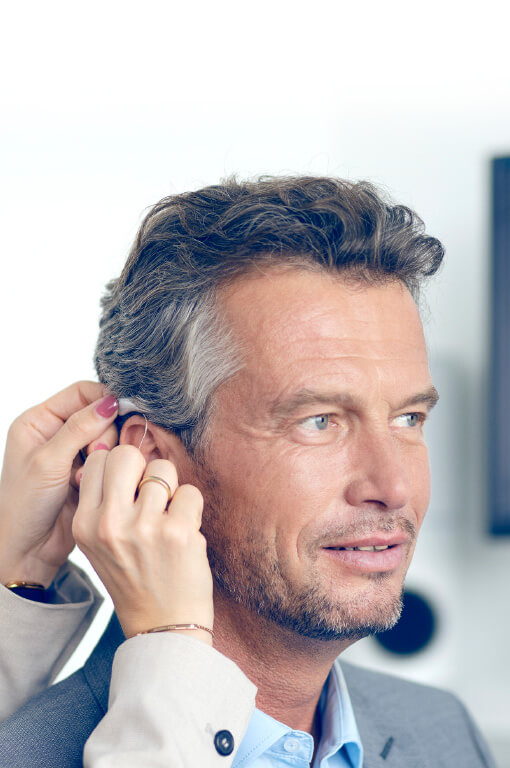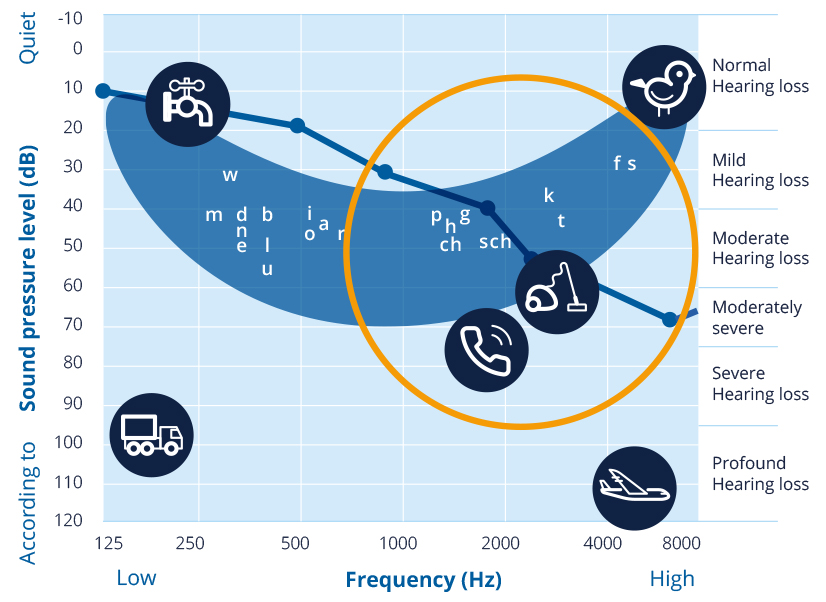
hear.com – India’s leading destination for advanced hearing aids & expert care
Life with hearing aids
Hear better with hear.com
How is hearing loss diagnosed? Who Prescribes Hearing Aids? How are they adjusted and how do you get used to life with hearing aids? Read here about the entire process from first noticing the hearing loss to wearing the hearing aid comfortably.
Most of the time, hearing loss goes unnoticed at first by the person themselves, but instead by their friends or family. If you are told frequently that your ears are no longer working properly and/or you suspect that you can no longer hear so well, you should investigate the matter as soon as possible. Those who treat hearing loss early can usually prevent more serious consequences.
Table of Contents
- From fitting to hearing aids
- Establishing hearing loss
- Differences in decibels
- The hearing aid
- Validity of a hearing aid
- How are hearing aids fitted?
- How do you get used to hearing aids?
- 3 tips from the experts
From the first fitting to an optimal hearing aid for you
Let hear.com help you on your way to your new hearing aid and guide you through the entire process. With our expert hearing care professionals, your ears are in the best of hands!
In addition, we are at your side at any time by phone with comprehensive advice.
We will provide you with information on all aspects of getting used to life with hearing aids. You get the benefit of a dual consultation: from the hearing care professional at your location and from one of our hear.com hearing care experts on the phone.

Establishing hearing loss
To get a first impression, you can test your hearing with the hear.com hearing test. Developed by acousticians, it only takes a few minutes and helps you to better assess your hearing ability. However, it does not replace a visit to the ENT doctor and an audiologist.
ENT specialists and audiologists can accurately measure hearing loss. Audiologists often have significantly more time for this process.
It determines the medical cause of the hearing loss. In addition, one can get their ears cleaned professionally before the measurement and thus rule out certain factors that may be causing your hearing loss.
A detailed hearing test takes about 20 minutes. No special preparation on your part is necessary for this.

Difference between "hard of hearing", and "deaf"
Hearing loss typically refers to a hearing loss of around 41-55 decibels. In this case, one speaks of moderate hearing loss. There is also a mild form of hearing loss with a hearing loss of between 26 and 40 dB and severe hearing loss with a hearing loss of 71 to 90 dB. Residual hearing loss or “hearing loss bordering on deafness” describes a hearing loss from around 90 decibels.
Deaf (more colloquially: deaf) is a person whose hearing loss is more than 120 dB. Just for reference: the ticking of a wristwatch is around 20 decibels and a normal conversation 55 decibels. Traffic noise is usually around 75 dB.
The hearing aid process
A prescription for a hearing aid is typically issued by the ENT doctor and confirms the need for a hearing aid to the health insurance company. It is absolutely necessary for initial restorations and early restoration of hearing aids (e.g. due to loss). The ENT doctor will then issue a prescription for a hearing aid prescription immediately after examination.
Should you not want or need a prescription, you can directly approach an audiologist via platforms like hear.com. They will recommend suitable hearing aids for you. They will take into account measurements, your medical history as well as your personal needs, your preferences, and your budget. If your desired hearing system is an in-the-ear hearing aid and an otoplastic (a custom-made earmold) is required, the hearing care professional will take an impression of your auricle and prepare the selected hearing aid for you. Depending on the type of hearing aid, this can take around 1-2 weeks.
How long is an audiogram or prescription for hearing aids valid?

The audiogram or hearing aid prescription is valid for a maximum of 6 months. However, many audiologists will not accept a prescription more than a month old.
It is therefore advisable to visit a hearing aid acoustician as soon as possible after receiving the hearing aid prescription and to begin with the fitting so you can adjust to life with hearing aids as soon as possible.
How are hearing aids fitted?
Once the audiologist has prepared the hearing aid for you, they can fine-tune it together with you. Volume and functions are precisely tailored to your hearing loss and hearing preferences. The audiologist will also explain how to operate the device and inform you about changing batteries, cleaning, and drying. As a rule, you should plan around an hour for this. It will then take less time for subsequent readjustments.
You can now try out your hearing aid at home and put it to the test in everyday scenarios. You can discuss your experiences with your hearing aid audiologist, who will then readjust the devices on this basis. A key part of living life with hearing aids is to get the device adjusted if necessary so that it offers you a comfortable fit and optimal performance.
How do you get used to hearing aids?

During the trial, you should test the hearing aids in all conceivable situations in your everyday life. You may find that some things are unfamiliar to you at first. Remember that you have experienced muffled sounds for a long time or have not heard any sounds at all. Your own voice may sound strange and perhaps too loud to you because you have developed a habit of speaking louder because of your hearing loss. Give your hearing some time to get used to the new sense of hearing. However, the new acoustic impulses train your hearing ability and you will quickly notice how you regain a bit of quality of life every day.
3 expert tips for getting used to life with hearing aids:
- Wear your hearing aids every day. Put them in in the morning and take them out in the evening.
- Ideally, only take a so-called listening break if you have complaints (e.g. headaches) by taking out the hearing aids.
- Then discuss this with your audiologist. This will help him fine-tune your hearing aid.

